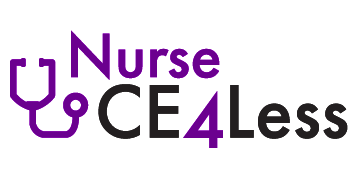Course Summary
Acute and chronic pain affects a large percentage of the population in the nation and worldwide, and every person will feel and respond to pain in a uniquely individual manner based upon biological, social, cultural and psychological factors. Pain treatment plans often include pharmacological options, which may consist of opioid, non-opioid or combination drug treatments. Often patients will seek treatment other than what has been recommended by a medical provider either because of a concern of side effects or due to inadequate pain relief. Common types of nonpharmacological approaches to pain management, including complementary and alternative medicine strategies, have been studied and several options are increasingly supported in the medical literature with regard to chronic pain and procedural pain. Techniques such as progressive relaxation and other forms of therapy have gained increased recognition as potentially useful treatment regimens without or in combination with medical approaches focused on alleviating pain and improving quality of life. It is important that pain management strategies for acute and chronic pain be tailored to each specific patient’s diagnosis and general condition in order to provide safe and appropriate pain relief.
Course Format
Homestudy
Course Syllabus
- I. Introduction
- II. Pain Management Generally
- III. General Pain Measurement Tools/Instruments
- 1. Visual Analogue Scale
- 2. Pain Scales for Children and Infants
- IV. Pharmacological Management
- 1. Premedication Assessment
- 2. Balanced Anesthesia
- 3. Preventive Approach
- 4. Precision Dosing
- 5. Pro re nata (PRN) Medications
- V. Administration of Pain Medications
- 1. Patient-Controlled Analgesia
- 2. Local Anesthesia
- VI. Pharmacological Agents
- 1. Opioid Analgesics
- 2. Non-steroidal anti-inflammatory drugs
- 3. Muscle Relaxant
- 4. Anti-Seizure Drugs
- 5. Tricyclic Antidepressants
- 6. Alpha Adrenergic Agonist
- VII. Non-Pharmacological Pain Management
- 1. Massage Therapy
- 2. Cold and Heat Therapies
- 3. Transcutaneous Electrical Nerve Stimulation
- 4. Distraction
- 5. Guided Imagery
- 6. Hypnosis
- 7. Relaxation Techniques
- 8. Neurological and Neurosurgical Approaches
- VIII. Complementary and Alternative Medicine for Pain Control
- 1. Music Therapy
- 2. Herbal Therapy
- 3. Reflexology
- 4. Magnetic Therapy
- 5. Electrotherapy
- 6. Polarity Therapy
- 7. Acupressure
- 8. Emu Oil Therapy
- 9. Aromatherapy
- 10. Homeopathy
- IX. Future Therapies
- 1. Imaging Advancements
- 2. Channels
- 3. Trophic Factors
- 4. Plasticity
- 5. Neurotransmitters
- X. Case Study: Acupuncture and Pain
Author
Noah H. Carpenter, MD
Dr. Noah Carpenter is a Thoracic and Peripheral Vascular Surgeon. He completed his Bachelor of Science in chemistry and medical school and training at the University of Manitoba. Dr. Carpenter completed surgical residency and fellowship at the University of Edmonton and Affiliated Hospitals in Edmonton, Alberta, and an additional Adult Cardiovascular and Thoracic Surgery fellowship at the University of Edinburgh, Scotland. He has specialized in microsurgical techniques, vascular endoscopy, laser and laparoscopic surgery in Brandon, Manitoba and Vancouver, British Columbia, Canada and in Colorado, Texas, and California. Dr. Carpenter has an Honorary Doctorate of Law from the University of Calgary, and was appointed a Citizen Ambassador to China, and has served as a member of the Indigenous Physicians Association of Canada, the Canadian College of Health Service Executives, the Science Institute of the Northwest Territories, Canada Science Council, and the International Society of Endovascular Surgeons, among others. He has been an inspiration to youth, motivating them to understand the importance of achieving higher education.



